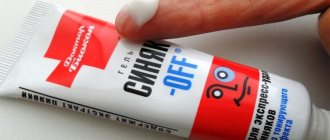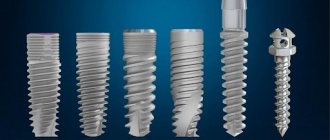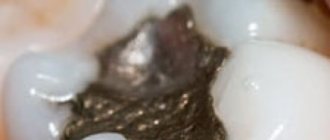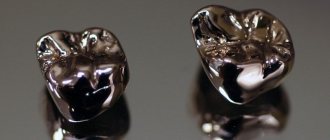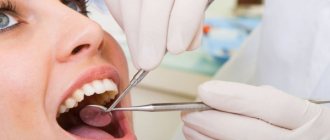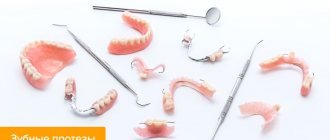Nonsteroidal anti-inflammatory drugs (NSAIDs) are one of the most popular pharmaceutical products. They are prescribed during the treatment of a number of diseases and conditions, often in entire courses. Even with clear instructions from the attending physician, many compatriots have doubts and look for information about drugs on the Internet. And then they come to the pharmacy and ask the pharmacist questions, hoping to justify their guesses or dispel doubts. In this situation, the head manager needs, on the one hand, to help the pharmacy visitor, and on the other hand, not to take on the role of a doctor. It is in this vein that we will cover the topic of topical NSAIDs today - in the form of competent answers to customer questions.
What does “when used correctly” mean? Anointed, and that’s it.
It is advisable to rub in topical forms of NSAIDs for a while rather than just apply them. The analgesic and anti-inflammatory effect of the ointment will be much higher if you do not just “anoint” it, but actively rub the product into the skin over the sore spot for some time. In the course of relevant studies, it was found that even 45 seconds of rubbing diclofenac diethylamine gel five times increased the transdermal delivery of the drug compared to simple application to the skin. And you need to remember that pain-relieving ointments based on NSAIDs act on areas of pain located immediately under the skin. If we talk about joints, then these are the knees, elbows and small joints of the hands. The local form most likely “will not reach the hip joint.” It should be rubbed “around the circumference” of the limb, for example, not only into the dorsum, but also into the palmar surface of the interphalangeal joint [6, 7].
Preventive measures
It is easier to prevent any disease than to treat it. To prevent vulvovaginitis, the following measures are recommended:
- proper toilet of the vulva. You need to wash from front to back. Do not use products with an aggressive pH environment;
- wearing tailored underwear made from natural materials;
- use of barrier contraception;
- excluding douching without indications - this way you can wash healthy flora;
- visit a gynecologist for consultation 1-2 times a year.
Which topical NSAID is best?
Everything is individual. If the analgesic effect of oral and injectable forms of NSAIDs can be more or less ranked, then an objective comparative assessment of topical drugs is very difficult. The reason for this is that, along with the actual active substance, the intensity of rubbing, excipients (for example, dimethyl sulfoxide) and the placebo effect play a significant role. Most studies on the effectiveness of topical NSAIDs have focused on diclofenac and ketoprofen. The increased attention to them is due to the fact that diclofenac is the only NSAID whose topical forms are approved by the American Food and Drug Administration (FDA), and ketoprofen, accordingly, is approved in most other countries of the world. Reliable data comparing these two drugs with each other have not yet been published. No one questions the effectiveness of other non-steroidal anti-inflammatory drugs for external use (ibuprofen, phenylbutazone, piroxicam, nimesulide, etc.); each of them was the subject of several clinical trials at one time, but the geography of their use is much more modest and is often limited to a few developing countries [2, 8].
Vulvovaginitis: symptoms
Symptoms do not depend on the cause of the disease. Signs of an inflammatory process in the vulva and vaginal mucosa:
- itching
- burning
- painful sensations in the area of the external genitalia, aggravated by walking
- pain during intercourse
- scanty purulent discharge from the vagina (with mechanical damage to the mucous membrane, it can be abundant)
- increase in body temperature
Little girls may experience neurotic manifestations: sleep disturbance, increased excitability, tearfulness.
The disease can be acute or chronic. Symptoms of the forms of pathology differ only in the degree of severity.
Do excipients in the local form of NSAIDs matter?
Yes, they improve skin permeability and perhaps enhance the therapeutic effect in a certain way. In separate studies, for example, topical formulations of diclofenac with dimethyl sulfoxide (DMSO) and diclofenac diethylamine 1.16% have been shown to penetrate the skin faster than “regular” diclofenac sodium gels. In addition, DMSO itself may have a slight anti-inflammatory effect. There is no solid evidence of an increase in the analgesic effect due to the listed supplements, but their use at least helps to overcome the individual characteristics of the skin [7, 9–11].
Can I take NSAID tablets and use the topical form at the same time?
This is not directly prohibited by the instructions for use, but it is not recommended, and, apparently, does not make sense. According to the only credible study on this topic, there was no significant increase in the analgesic effect when combining local and systemic forms of NSAIDs. At the same time, this use of drugs slightly increased the frequency of rectal bleeding. In clinical trials, oral administration of diclofenac and ibuprofen at doses 2 and 3 times higher than recommended also did not lead to increased pain relief. The effect of a combination of tablets and a topical form of NSAIDs will most likely not be pronounced. At the same time, the likelihood of unwanted reactions slightly increases. Therefore, this combination is not recommended. Usually, if a local remedy does not help, the doctor cancels it and transfers the patient to oral administration [12, 13].
Vulvovaginitis
Vulvovaginitis is a disease of the female genital organs.
Inflammation may be of bacterial origin or be the result of mechanical irritation of the vulvar and vaginal mucosa. The natural structure of the female body allows us to protect the genitals from microorganisms from the external environment. The vaginal microflora of a healthy woman easily inhibits the growth of opportunistic bacteria that live on the mucous membranes. A decrease in immunity due to stress, intoxication or a viral disease can provoke a surge in the activity of pathogens, resulting in the development of acute vulvovaginitis.
Is it possible to use topical NSAIDs for stomach erosions or ulcers?
According to the instructions, it can be done “with caution.” The concentration of the active substance in the blood plasma after the use of topical NSAIDs is less than 10% of that achieved by oral administration. The incidence of adverse reactions from the gastrointestinal tract when using local forms of NSAIDs does not differ from that when rubbing placebo and is significantly lower than when using systemic agents. However, just in case, these drugs are not recommended to be applied to the skin during gastrointestinal bleeding and exacerbation of gastric or duodenal ulcers [5, 14].
Wound healing and factors influencing this process
The wound healing process can be disrupted by many factors.
Healing is the process of repairing damaged tissue and restoring its integrity. During the healing process, certain processes occur. We will not dwell on them in more detail, but will only indicate those factors that may disrupt the healing process:
- Age. As a rule, this applies more to older people. The child's body has great regenerative capabilities. This is due to the high level of anabolic (construction) processes in the body.
- Attachment of infection.
- Decreased immunity.
- Poor circulation in the wound area.
- Chronic diseases (diseases of the respiratory and cardiovascular systems, diabetes, tumors and others).
Healing complications
- Attachment of infection . Most often, a nonspecific purulent infection develops. The threat is tetanus, rabies, diphtheria. Therefore, injuries that have been bitten and contaminated with soil or old metal objects should be immediately examined by a surgeon with a number of preventive measures taken (administration of anti-tetanus serum, rabies vaccine).
- Bleeding.
- Divergence of defect edges.
- In some cases, healing may be complicated by a hypertrophic scar or keloid . They are an abnormal scar that can spread beyond the defect area and also contribute to the development of complications.
How many times a day and for how long can you apply such drugs?
Typically three to four times a day for two weeks. Topical NSAIDs act quite quickly - the effect occurs within an hour - and help control acute somatic pain of moderate intensity. They cope worse with chronic pain. If there is no effect within two weeks of proper use, you should consult a doctor. There is a chance that he will recommend switching to oral forms or another group of drugs.
Sources
- Derry S, Conaghan P, Da Silva JA, et al. Topical NSAIDs for chronic musculoskeletal pain in adults. Cochrane Database Syst Rev. 2016; 4: CD007400. https://www.cochranelibrary.com/cdsr/doi/10.1002/14651858.CD007400.pub3/full
- Derry S, Wiffen PJ, Kalso EA, et al. Topical analgesics for acute and chronic pain in adults – an overview of Cochrane Reviews. Cochrane Database Syst Rev. 2017; 5: CD008609. https://www.cochranelibrary.com/cdsr/doi/10.1002/14651858.CD008609.pub2/full
- Klinge SA, Sawyer GA. Effectiveness and safety of topical versus oral nonsteroidal anti-inflammatory drugs: a comprehensive review. Phys Sportsmed. May 2013; 41(2): 64–74. https://www.ncbi.nlm.nih.gov/pubmed/23703519
- Kloppenburg M, Kroon FP, Blanco FJ, et al. 2022 update of the EULAR recommendations for the management of hand osteoarthritis Annals of the Rheumatic Diseases 2019; 78: 16–24. https://ard.bmj.com/content/78/1/16
- Honvo G, Leclercq V, Geerinck A, et al. Safety of Topical Non-steroidal Anti-Inflammatory Drugs in Osteoarthritis: Outcomes of a Systematic Review and Meta-Analysis. Drugs Aging. 2019; 36(Suppl 1): 45–64. https://www.ncbi.nlm.nih.gov/pmc/articles/PMC6509095/
- Hasler-Nguyen N, Fotopoulos G. Effect of rubbing on the in vitro skin permeation of diclofenac-diethylamine 1.16% gel. BMC Res Notes. 2012 Jun 21; 5: 321. https://www.ncbi.nlm.nih.gov/pmc/articles/PMC3424122/
- Hagen M, Baker M. Skin penetration and tissue permeation after topical administration of diclofenac. Curr Med Res Opin. 2022 Sep; 33(9):1623–1634. https://www.tandfonline.com/doi/full/10.1080/03007995.2017.1352497
- Rafanan BS Jr, Valdecañas BF, Lim BP, et al. Consensus recommendations for managing osteoarthritic pain with topical NSAIDs in Asia-Pacific. Pain Manag. 2018; 8 (2): 115–128. https://www.futuremedicine.com/doi/10.2217/pmt-2017-0047?url_ver=Z39.88-2003&rfr_id=ori:rid:…
- Pradal J, Vallet CM, Frappin G, Bariguian F, Lombardi MS. Importance of the formulation in the skin delivery of topical diclofenac: not all topical diclofenac formulations are the same. J Pain Res. 2019; 12: 1149–1154. https://www.dovepress.com/importance-of-the-formulation-in-the-skin-delivery-of-topical-diclofen-pee…
- Galer BS. A comparative subjective assessment study of PENNSAID® and Voltaren Gel®, two topical formulations of diclofenac sodium. Pain Pract. 2011; 11 (3): 252–60. https://onlinelibrary.wiley.com/doi/abs/10.1111/j.1533-2500.2010.00420.x
- Tieppo Francio V, Davani S, Towery C, Brown TL. Oral Versus Topical Diclofenac Sodium in the Treatment of Osteoarthritis. J Pain Palliat Care Pharmacother. 2022 Jun; 31 (2): 113–120. https://www.tandfonline.com/doi/abs/10.1080/15360288.2017.1301616?journalCode=ippc20
- Simon LS, Grierson LM, Naseer Z, et al. Efficacy and safety of topical diclofenac containing dimethyl sulfoxide (DMSO) compared with those of topical placebo, DMSO vehicle and oral diclofenac for knee osteoarthritis. Pain. 2009; 143(3):238–45. https://insights.ovid.com/article/00006396-200906000-00016
- Van Amburgh J. Can Topical and Oral NSAIDs Be Combined for Pain Relief? Medscape. https://www.medscape.com/viewarticle/861740
- Roth SH. Nonsteroidal anti-inflammatory drug gastropathy: new avenues for safety. Clin Interv Aging. 2011; 6: 125–31. https://www.ncbi.nlm.nih.gov/pmc/articles/PMC3131982/
- Kowalski ML, Makowska JS, Blanca M, et al. Hypersensitivity to nonsteroidal anti-inflammatory drugs (NSAIDs) – classification, diagnosis and management: review of the EAACI/ENDA and GA2LEN/HANNA. Allergy 2011; 66:818–829. https://www.eaaci.org/attachments/668_Kowalski%20Hypersensitivity%20to%20nonsteroidal%20anti-inflamm…
- Rogers NV, Rowland K. An alternative to oral NSAIDs for acute musculoskeletal injuries. J Fam Pract. Mar 2011; 60 (3): 147–8. https://www.ncbi.nlm.nih.gov/pmc/articles/PMC3183960/
First aid for a child for superficial wounds
When such a situation arises, parents ask themselves: “How to treat the wound? How to properly treat a wound? What is the best remedy for treating a wound?
Before helping a child, parents need to wash their hands with soap and use an antiseptic. Next, in this sequence, you need to follow a number of instructions and actions:
- Assess the extent and nature of the damage. It is very important to understand whether the baby has a deep or superficial wound.
- Rinse and stop bleeding. Hydrogen peroxide is best suited for this purpose. You can also use a solution of furatsilin and chlorhexidine.
- Next, you can treat the skin with a drying antiseptic, for example, iodine solution or brilliant green.
- Apply an aseptic (clean) dressing.
- In the future, it is important to change the dressings regularly. It is also possible to use ointments and creams discussed earlier, which will speed up the healing process.
In case of deeper defects, heavy bleeding, wounds that have been bitten and contaminated with soil or old metal, you must urgently contact a surgeon.
Wounds are quite common, especially in young children. The task of parents is to provide timely assistance to the child in order to prevent infection. You must have a minimum first aid kit in your first aid kit. Do not self-medicate and, if threatening injuries occur, consult a doctor.
